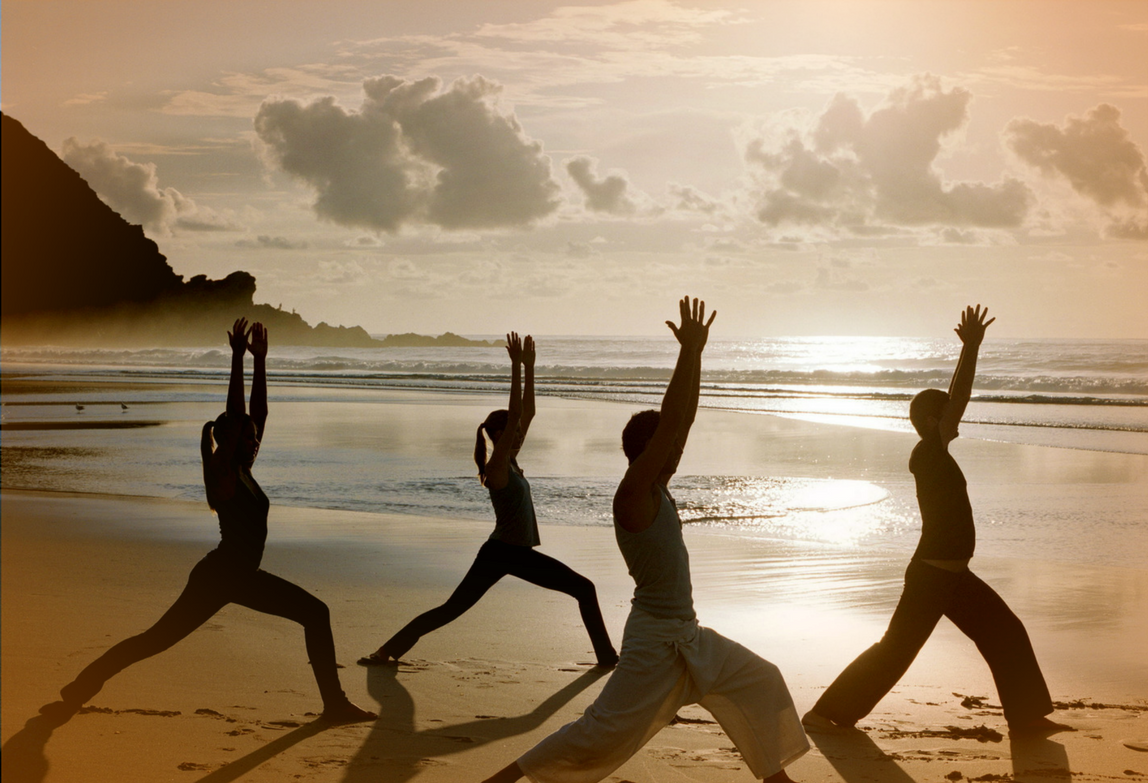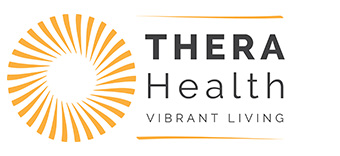We’ve all heard that sitting is bad for you. It’s the reason why many of your co-workers are getting standing desks, and why sitting for long periods of time may actually leave you feeling more tired than when you first sat down (If you’ve ever crossed an ocean in an airplane, you know the feeling well.).
Why does sitting wear on us so much? And what can we do to support our backs—and our health—while we’re at work, where many of us sit for 7+ hours a day, five days a week? Turns out, there are simple changes you can make to your daily routine to minimize the negative health effects of sitting, and show your body some workplace respect.
According to the Heart Foundation, even people who exercise regularly aren’t immune to the dangers of sitting. Sedentary time—which includes working at a computer, driving, watching TV, reading, and sitting down for meals—increases your risk for cardiovascular disease and diabetes. Yet the average Australian adult with a desk job spends eight to ten hours a day sitting. This seemingly benign activity is not only bad for your heart and blood vessels, it’s also bad for your musculoskeletal system, and your ability to maintain a healthy weight. Why is this the case? Let’s look at what happens physically in your body when you sit for more than 30 minutes at a stretch.
What Happens When You Sit
Your glutes lengthen and hamstrings shorten. When you sit, two main things are happening at the hip joint: Your hamstrings are in a shortened position, and the more you sit, the tighter your hamstrings get. Tight hammies are the number one cause of low back pain! Second, when sitting, your gluteal muscles are lengthened to their full range of motion. Being in a lengthened position for long periods of time makes those butt muscles weak.
What’s the big deal about glute muscles? They aid in balance, gait, and hip stability. With weak glute muscles comes valgus knees (knees that cave in when bending), which can cause a cascade of negative effects on your gait, lower body strength, and joint health. Weak glutes can also lead to a general lack of stability and balance, which increases your risk of falling. Plus, glutes (with the help of our quadriceps), are responsible for stepping up and decelerating yourself down steps. Think stairs, hiking, walking uphill, etc. A very important movement!
Your body pulls forward. When you sit down and reach out to something in front of you (i.e., keyboard, mouse, book, coffee mug), your shoulders protract forward, taking the whole upper body with them and rounding out your upper back.
Core muscles become weak. When we sit with bad posture the spine is tiling forward and the abdominal muscles are de-activated. Sitting requires little effort from the majority of abdominal muscles; the act of sitting leaves them lax and underused.
Neck muscles get overstressed. The action above usually leads you to tilt your head forward, taking the weight of your head away from the supportive framework of your shoulders and spine. So your neck muscles start working overtime to keep your head from falling off your shoulders. Picture a rope attached to a tall building and you are leaning back, pulling on this rope to keep this building from falling over. Now do this for hours. That’s what your neck muscles are doing while your head is tilted forward.
Shoulders and back muscles work overtime. Your upper back muscles are in a constant state of lengthening as you are working, reaching and looking forward in your seated position. This makes them very weak! In addition, your muscles surrounding your shoulder blades are constantly “on,” working to stabilize your shoulders and arms as you work at your computer. Constantly stabilizing and holding your arms out in front of you fatigues those upper back muscles and can lead to aches and pains.
Circulation decreases. When you minimize your movement, especially with a sitting position, your blood circulation decreases which causes blood to pool in the legs. This can lead to swollen ankles, varicose veins, and even blood clots in the legs. Slowing circulation also means less blood to the brain.
Productivity and alertness decline. When blood flow, which carries much-needed oxygen to the brain, is restricted, your thoughts can become foggy, you’ll feel sluggish, and you can be more easily distracted. If you get up, move for a few minutes and stretch, most likely you’ll return to your desk with a new perspective, new ideas, and a fresh start to your work!
Likelihood of weight gain increases. Lastly, sitting all day decreases the number of calories you burn and therefore is a big factor in weight gain. There are many associations with sitting and weight gain, obesity, and risk of disease. To make this idea more tangible, picture this: If you stand instead of sit, you’ll burn between 30-50 extra calories per hour depending on your size. That might not sound significant, but in an 8-hour work day that is an extra 240-400 calories burned! In a week that’s 1,200-2,000 extra calories being used for standing! It takes a 3,500 calorie deficit to lose a pound of fat. So in just a few weeks you can lose a pound of fat simply from standing. Imagine the progress you’d see after a year!
TIPS!
All this being said, we still have to work, right? So, what can you do to help your body? The best thing you can do is use a standing desk as much as possible. Your body will thank you so much for getting out of that sitting position. But if you can’t stand while you work (and even if you can) try to incorporate these basics into your day:

1. Get up and stretch. Walk from meeting to meeting, get up and get a water or snack, and get a few twists and stretches in every 20-30 mins at your desk. Remember to stretch out your hamstrings in particular. As I mentioned, tight hamstrings are the number one cause of low back pain in the workplace. Try yoga, or better yet, just spend 10 minutes a day stretching those hammies out.
2. Strengthen your upper back. Any sort of upper body pulling motion will do wonders on your back. TRX rows, planking rows, pull ups, spri band pulls… anything where your arms are out in front of you (or overhead) and you are pulling back or down towards the armpits is perfect!
3. Increase your daily activity. Schedule walking meetings and phone calls, take the stairs rather than the elevator, exercise at lunch, or try biking to work. Set alarms on your phone to remind yourself to get up and stretch. Get up and go ask people questions in person rather than sending an email. At the very least, start becoming more aware of how much time you actually spend sitting each day.
4. Avoid sitting outside work. Once you’re home for the day, get some exercise! Go for a walk with your family, play with the kids, stand up and cook an awesome meal in the kitchen, or substitute hobbies for TV time. Just try and be active—your body will thank you!
AMANDA WATSON
ORTHOPAEDIC EXERCIST SPECIALIST
Amanda is the founder of Happily Forever Fit, a Santa Cruz personal training and boot camp program, and a proud brand ambassador for Nordic Naturals. With 8+ years experience personally training individuals and small groups, Amanda loves helping people achieve their fitness and nutrition goals.









Leave a Reply
Want to join the discussion?Feel free to contribute!